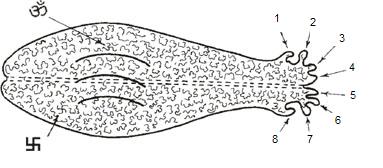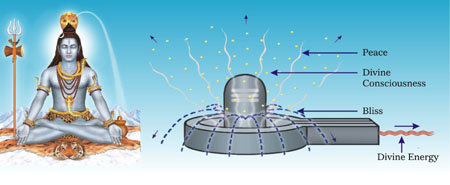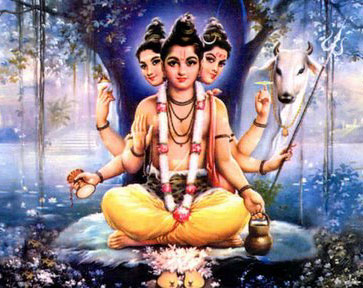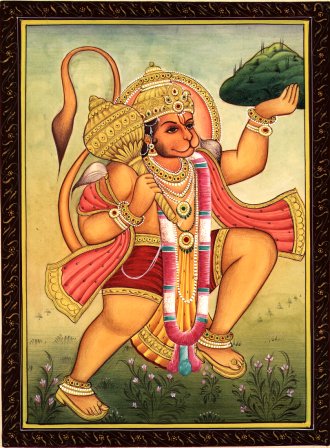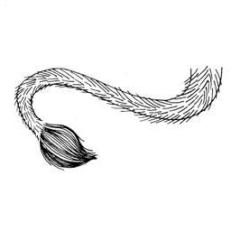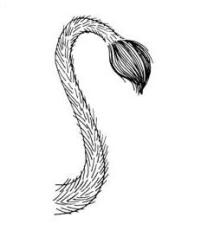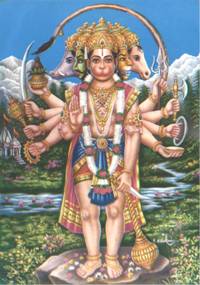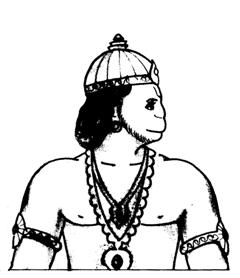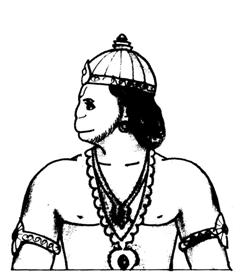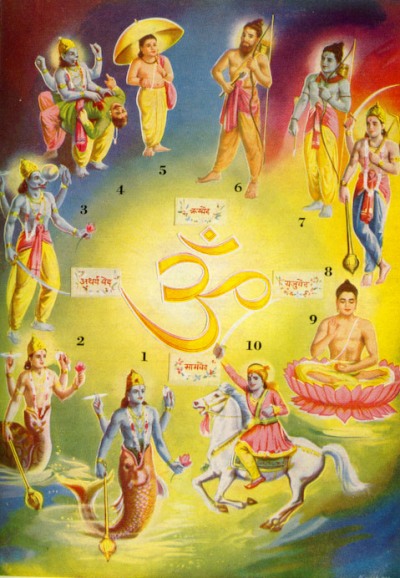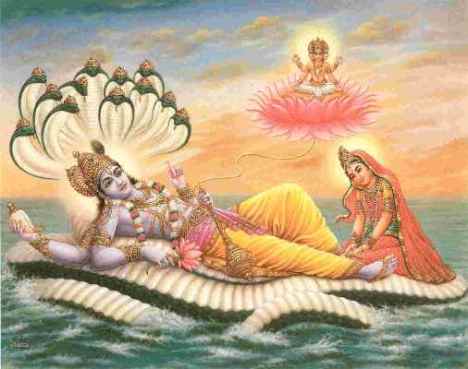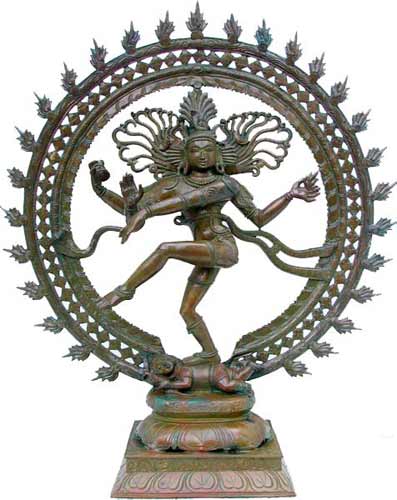 Lord Shiva in the form of Nataraj |
Contents
1. Forms of Shiva
1.1 Rudra
‘The Vedic Rudra was a destroyer and fearful too but Shiva who is the deity of worship of all non-Aryan classes and tribes displays the aspect of creation. The Vedic Aryans did not know about Shiva. They only knew Rudra. An important adjective about Him in the Vedas is Vrushabh (वृषभ). This word is derived from the root vrush (वृष्). It has two meanings, the one granting rain and the one possessing tremendous ability to procreate. Rudra gives rain which causes the growth of vegetation. This is the concept clearly expressed in the mantras about Rudra in the Rugveda. Presently the word vrushabh is used to refer to a bull since it has an exceptional power to procreate.’ Some of the meanings of the word Rudra are as follows.
- ‘Ru (रु) means to cry and dru (द्रु) means to run. Rudra is the one who cries, who makes one cry and one who runs away while crying.
- Rut (रुत्) means sorrow of the materialistic world. One who vanquishes and overcomes it is Rudra.
- Rut means the truth, that is the Upanishads composed of words. One who has realised or expounded the truth is Rudra.
- Rut is speech consisting of words or the knowledge of Self-realisation expounded through this medium. One who bestows this to worshippers is Rudra.’
Attendants of Rudra (Rudragans): ‘They are Rudra’s subordinates who remain in His proximity and serve Him. They are said to be one crore in number. Spirits (bhut), vetal, uchchushma, pretputan, kubhand are the attendants created by Rudra. The attendants of Rudra don an attire similar to that of their master. They reside in heaven, destroy evildoers, protect the righteous, observe the pashupat vowed religious observance (vrat), vanquish obstacles of the yogis and serve Lord Shiva perpetually.’
1.2 Ardhanarinateshvar (Ardhanarishvar)
‘In the ancient times the divine birth passage (yoni) and the divine phallus (linga) were two distinct entities. Later man combined them into a single Shivalinga and commenced its worship. Later when man became civilized and acquired sufficient talent to sculpt idols he created the form of Ardhanarishvar as a symbol of the divine birth passage and divine phallus. The objective of these two forms is that if generation of offsprings should occur then the two forms certainly need to unite. These two sculptures aim at portraying the distinction of man and woman prior to the commencement of creation. In the initial stages the male-female principles were inseparable, that is they were merged into one another. Even today in the organisms of the lowest strata female and male principles are present in the same body. They themselves are male and female and procreate from within themselves.
“Agnishomatmakam jagat (अग्निषोमात्मकं जगत्)” is a quote from the Shrutis (Vedas). Fire (agni) is the male principle and is present in the menstrual flow of the female. The moon (soma) is the feminine principle and is present in the sperm of the male. Desire (kama) is the force binding the two. These two principles get attracted to one another due to desire. Philosophy too elucidates the same tenet. When Shiva gets associated with Divine Energy (Shakti) He becomes active. In the non-duality (advait) described in the holy text of Shivagam, Divine Energy (Shakti), that is the Great Illusion (Maya) is not renounced but is considered as the Energy of Brahman (Brahmashakti). The permanent union of Shiva and Shakti is considered as non-duality. Hemadri has described how this half-feminine (ardhanari) form is to be created in the text Chaturvargachintamani. According to him – the right half of Shiva should be that of a woman.’ In this form the potential of the feminine as well as the masculine principle is equal; hence it is described as ‘Shaktyasahitaha Shambuhu (शक्त्यासहित: शंभु: ।)’ meaning The Lord Shambhu (Shiva) along with Divine Energy (Shakti).
1.3 Kalbhairav
He is one out of the eight bhairavs and was created from Shiva’s wrath. After Shiva had the fifth head of Lord Brahma severed through Kalbhairav, He directed Kalbhairav to stay at Kashi, a place of pilgrimage. Kalbhairav is also referred to as the ‘guardian of Kashi’. On entering Kashi, first one has to pay obeisance to Him. When returning after paying obeisance to Him one ties His black thread across one’s arm.
1.4 Virabhadra
He has made Vetal His vehicle. A legend says that it was Virabhadra who first ritualistically worshipped Shiva in the form of His divine phallus (linga).
1.5 Bhairav (Bhairavnath)
Definition and meaning
- ‘Bhuhu (भू:) – bhai (भै) – bhavaha (भव:) – ravaha (रव:)’ means one who creates an uproar as he is born.
- Bhaihi (भै:) means frequencies of light and ravaha (रव:) means sound. The point where frequencies of light and sound unite is the earth (bhairavi) and Bhairavnath is the master (nath) of that earth.
- Bhuhu (भू:) means a part formed from several particles and ravaha means small particles. Hence bhairav means the earth created from several small particles and Bhairavnath is its master.
Types: ‘The text Shiva Agam describes sixty-four types of bhairavs. Eight bhairavs constitute one category (varga). The chiefs of these eight categories are famous as the eight bhairavs (ashtabhairav). Kalbhairav and Batukbhairav are famous among the Bhairavs. The Tantra texts consider the sixty-four bhairavs as the masters of the sixty-four yoginis and display close association between Divine Energy (Shakti) and the bhairavs. It is said that a Bhairav guards every seat of Divine Energy (Shaktipith). The holy text Mahapithnirupan states that ritualistic worship (puja) of Divine Energy done without the inclusion of the Bhairav proves to be futile. In Maharashtra generally Bhairav is worshipped as the village deity (gramadevata). He is referred to as Bhairoba, Bahiroba or Viroba. The deity has its seat in almost every village in a snake hole or a crematorium. At times it is in the form of an idol or in the form of a round stone (tandala). It is said that when at night He patrols on horseback He is accompanied by a black dog.’
Subordinate deities (kshudradevata): First chant the Name Bhairav and then any other Name of a deity such as Vishnu, Shiva, Lakshmi, etc. not chanted earlier, each for two minutes. Both the times note the spiritual experience obtained. Then read the following section. At one satsang (spiritual meeting) after chanting the Name of Bhairav and Narayan seekers got the following spiritual experiences.
| Bhairav | Narayan | |
| 1. Felt pleasant | 4 | 12 |
| 2. Felt distressed | 12 | 1 |
| 3. Felt nothing | 18 | 21 |
| Total | 34 | 34 |
The average spiritual level of the seekers was 35%. During a satsang, at times the spiritual level of a seeker can rise to even 40-50%. The spiritual level of an average individual is 20% while that of one who has attained the Final Liberation (Moksha) is 100%. If average individuals perform the same experiment, they do not perceive anything. Hence in such experiments everyone does not get spiritual experiences. Only those with a spiritual level of more than 35% are able to perceive a little from the subtle dimension and are able to give answers.
This will prove why one should not undertake spiritual practice of Bhairav. Just as one thorn is removed with another, spiritual practice of Bhairav generates an energy which decreases distress caused by distressing energy. During this process the individual may undergo some distress. Bhairav is a deity of the southern path (dakshinmarg) or region after death while Narayan is a deity from the northern path (uttarmarg) that is path of Bliss.
1.6 Vetal
The word Vetal (वेताळ) is created from the word vaital (वैताल) meaning one who makes even a severe aberration dance to His tune. When ahat and anahat sounds fuse ‘vai (वै)’ frequencies are generated. They correct the abnormalities. ‘Vetal is also called Agyavetal, Jvalavetal or Pralayvetal. Skanda soldiers like Vetal, etc. are included in the spirit attendants (bhutagans) of Shiva. The Matsya Puran describes Vetal as one who feeds on ‘‘flesh and blood’’. Lord Shiva has made Vetal the presiding deity of spirits (pishach). The sorcerers (mantriks) call Vetal vir (brave). Vaitali, the mother of Vetal has gained importance as a “Matruka” deity. Idols of Vetal are made of wood or stone. Vetal as the village deity (gramadevata) is in the form of a round stone (tandala). In Goa its idols are made of wood or stone and at times are nude. The idols sport a trident or a staff. It is because of these fearsome qualities that Vetal became a subordinate (kshudradevata) or a village deity. He is the village deity in several villages of Goa like Priol, Amone, Savarde, etc. and in those in the vicinity of Pune in Maharashtra. In western Maharashtra the idol exists in the form of a round stone smeared with shendur (a saffron coloured powder) on the village border. More round stones smeared with shendur surround it. They are referred to as the soldiers of Vetal. Often temples of the nine planets (navagraha) adjoin the temple of Vetal. The community of Mahars in Maharashtra worship Him in the nude. To please Him sacrifices (balis) of roosters and goats are offered. In some places, sweet delicacies too are offered. During a religious festival, He is taken out in a procession seated in a palanquin decorated with flowers.’
1.7 Bhutnath
‘He is one of the subordinate deities from a category similar to that of Vetal. Goa has temples of this deity. At midnight He commences patrolling along with His soldiers. It is said that at that time He wields a staff in His hand and a blanket on His shoulder. Believing that His slippers wear out with His wandering about on foot, people in the vicinity of Savantvadi in Maharashtra offer Him a pair of new slippers every month. If one is possessed by a spirit then it is driven off by summoning Bhutnath.’
1.8 Nataraj
Shiva is believed to assume two states – the superconscious state (samadhi) and the tandav or lasya dance. The former refers to the unmanifest (nirgun) and the latter to the manifest (sagun). ‘Body movements which depict a particular event or issue is called natan or natya. The one who performs this natan is a nat (actor). Traditionally it is believed that Nataraj is the promoter of dance. Since Shiva is the pioneer among actors (nats) the title Nataraj is accorded to Him. The universe is His school of dance. Just as He is the dancer so is He also its observer. The role that Nataraj plays is to bring about activity in the universe with the commencement of His dance and to merge the movable and unmovable (animate and inanimate) creation into Him when He stops it. Thereafter He remains engrossed in Bliss solitarily. In short, Nataraj is the manifest representation of all activity of God. Nataraj’s dance is considered to represent the five actions of God, namely creation, sustenance, dissolution, the covering of the Great Illusion (Maya) and initiation (anugraha) (God’s grace to be liberated from the Great Illusion).’
The tandav dance: ‘In the Sangitaratnakar (7.5 – 6) origin of the tandav dance is explained as follows –
तण्डुना स्वगणाग्रण्या भरताय व्यदीदृशत् ।।
लास्यमस्याग्रत: प्रीत्या पार्वत्या समदीदृशत् ।
बुद्ध्वाथ ताण्डवं तण्डोर्मर्त्येभ्यो मुनयोऽवदन् ।।
Meaning: Then Shiva showed the uddhat dance, which He had performed earlier, to Sage Bharat through the chief of His attendants (Tandu). He also made Parvati perform the lasya dance, with great enthusiasm in front of Sage Bharat. Lasya is a dance form performed by women wherein the hands remain free. Sage Bharat and others later taught this dance, performed by Tandu known as the tandav dance, to man.
The dance in which the sound (nad) in every cell of the body (bhuvans) is that of Shiva is called the tandav dance. It is a dance performed by males and consists of postures (mudras), for instance the dnyanmudra is performed by touching the tips of the thumb and the index finger to each other. On account of this the mounds of Guru (Jupiter) and Shukra (Venus) on the palm are joined together, that is a male and a female unite.
This dance is of seven types – 1. Anandtandav, 2. Sandhyatandav (Pradosh dance), 3. Kalikatandav, 4. Tripurtandav, 5. Gouritandav, 6. Sanhartandav and 7. Umatandav.
Of these seven types the verse (stotra) Shivapradosh (alias Pradosh) describes the sandhyatandav as – Shiva performs this dance in the evening with Gouri the creator of the three worlds seated on a throne studded with precious stones. When Shiva dances Sarasvati plays the vina (a stringed instrument), Indra plays the flute, Brahma keeps the rhythm, Lakshmi sings, Vishnu plays the mrudanga (a kind of drum) and all the other deities stand around and watch the dance programme. In this dance Shiva has two arms and the scene of a demon being crushed under His feet is absent.
Of the above seven types the Gouritandav and Umatandav are both fearsome in nature. In this dance Shiva assumes the form of Bhairav or Virabhadra and is accompanied by Uma or Gouri. He performs this frightful dance in the crematorium where there are burning ashes of the corpses, along with the spirit attendants (bhutagans). Among Nataraj’s sattvik (sattva predominant) dance forms along with the sandhya dance, the nadanta dance is also extremely famous. The world famous idol of Nataraj at Chidambaram is in this very pose. Followers of the Shaiva and the Shakta sects consider these dances to be symbols of specific principles. In their opinion, during such a destructive, fearsome dance Shiva not only destroys the world but also frees embodied souls from bondage. The crematorium is chosen for the dance to depict that the ego of the embodied soul is reduced to ashes. Deities as well as demons are enthusiastic to accompany Lord Shiva during the tandav dance.’ An example of a posture from the Anandtandav illustrated below show how significant the various postures adopted in a tandav dance are.
| Meaning | |
| 1. ‘Different earings in each ear |
Ardhanarishvar |
| 2. The small hourglass shaped hand drum in the rear right hand |
Creation of Brahman in the form of sound and word |
| 3. Fire in the rear left hand | Purification of Brahman in the form of sound and word |
| 4. The front right hand | Protection to devotees |
| 5. The front left hand | Points to the foot raised for liberation of embodied souls |
| 6. The demons Apasmar or Muyalak crushed under the right foot. |
Destruction of nescience (avidya) or ignorance (adnyan) |
| 7. The surrounding circle | Cycle of Illusion (Maya) |
| 8. The hand and foot touched to the chakra |
Purifying the Great Illusion (Maya) |
| 9. Five lingas arising spontaneously from the flames of the chakra |
The subtle five cosmic elements’ |
1.9 Kirat
‘This is the Kapalik form of Lord Shiva. Among the masses this form is as popular as Shiva. In this form He drapes Himself with elephant hide and likes to drink liquor. He is engrossed in various sports of pleasure and is surrounded by thousands of women. Opposite Him the spirits dance merrily. Bhagvati Uma also dressed in the same attire accompanies Him. During the period of emergence of the Shaiva sect, this pleasure loving form of Shiva gradually lapsed into obscurity. Only His association with dance persisted. As that dancing form of Shiva evolved further the idol of Shiva as Nataraj was created.’
2. The family
2.1 The consort
Refer ‘Science of Spirituality : Vol. 9 B- Shakti, point – Divine Energy associated with Shiva’.
2.2 The son
‘He is the son of Lord Shiva and Parvati. He is named Kartikeya because He was nurtured and brought up by deities of the constellation of six stars known as Krutikas. The story about Kartikeya goes thus – After Kartikeya slayed a demon, Tarkasur, He became famous. As a result, Parvati began pampering Him. Too much pampering spoilt Him and He began molesting the consorts of deities. The deities complained about Him to Parvati. To subdue His boisterousness Parvati began to manifest Herself in every woman that He saw. This manifestation (sakshatkar) induced a feeling of repentance in Kartikeya and He swore that since that day He would view every woman in the world as His mother. The Shivalilamrut narrates a story in which Kartikeya has cursed women saying ‘Those women who come to pay their respects to Me will be widowed for seven births’. However there is no evidence of this in the Purans. In Maharashtra Kartikeya is a celibate (brahmachari) while in South India He has two wives. In Bangal, in the Hindu lunar month of Kartik an earthen idol (kshanika) of Kartikeya is worshipped by women desirous of bearing a son.’ This idol holds a peacock feather in His hand, not a staff.
Information on Ganapati is given in ‘Science of Spirituality : Vol 9 C – Ganapati’.
Several infant deities such as Murugan, Shvasta, Shasta, Skanda, Atavi, Atavishvar, Avalokiteshvar, Avaloki, Kotputra, etc. later merged into Lord Shiva.
At a satsang (spiritual meeting) seven people felt pleasant after chanting Skanda’s Name, six felt distressed and the remaining twelve felt nothing. Distress refers to feeling aversed to chanting the Name, heaviness in the chest, headache, etc. That is why worship of Skanda is not prevalent.
2.3 Attendants of Shiva (Shivagans)
Attendants of Lord Shiva reside in Shiva’s region (Shivalok). Attendants are servitors. They control the divine birth passage (mahayoni) and the pure particles (pavitrakas). Yamadharma and the chief of the southern region (dakshinlok) Virabhadra are also attendants of Shiva. Virabhadra is the only deity who is directly associated with the southern region, hence He is the master of spirits (bhut) and is called Bhutnath. When spirits come in contact with purity they are saved from the effects of destiny, become attendants of Shiva in Shiva’s region and derive a type of Bliss called mod. The different types of Shiva’s attendants are as follows.
- Ugragans: They undertake spiritual practice of the form of Shankar called Ugreshvar.
- Rudragans: Rudra means cranky. They weep yearning for a vision of God.
- Bhut and pishachagans
The functions and spiritual practice of each of these three attendants are different. Some attendants come to Shiva from Yama’s region (Yamalok) while others approach Him through Nandi, the bull as a medium.
Nandi: Nandaha (नंद:) means one whose nature is that of Bliss. Nandi thus means one who is Blissful. Here information on Nandi as an attendant is given. Further Nandi as a vehicle is discussed. ‘He is the chief attendant of Shiva and has several names viz. Nandish, Nandishvar and Nandikeshvar. Nandi performed rigorous austerities at the age of eight or nine years and acquired the proximity of Lord Shiva. Shiva accepted him as His son and chose him as the chief of His attendants. Later, he married Suyasha, the daughter of a Marut. Shaivites consider Nandi to be spiritually a symbol of the principle of Bliss. When Shiva performs the tandav dance he stands by to keep the rhythm. In South India, generally, the idol of Nandish is present on the left or right side of the main entrance of Shiva’s temple.’
2.4 Messengers of Shiva (Shivadut)
‘They are short, stocky and have a reddish complexion. Two tusks arise from their mouths. They have four arms holding a noose, a serpent, a trident and a vessel (mahapatra). Their duty is to transport the souls of the devotees of Lord Shiva when they die, in the pushpak plane to Kailas, the abode of Lord Shiva.’
2.5 Nandi as the vehicle (vahan)
Nandi in the form of a bull is Shiva’s vehicle and occupies an important position in Shiva’s family. Nandi is paid obeisance before Shiva.
Shrungadarshan: Shrungadarshan means viewing the divine phallus (linga) of Lord Shiva from in between Nandi’s horns. ‘Sayanacharya has derived the word vrushabh (वृषभ) from the root vrush (वृष) and it means the one who showers. The other meaning of the word vrushabh is one possessing tremendous energy for procreation.’ That is why Nandi is considered as a feature of evolved masculinity. Just as Manu is the first exponent of the science of righteous conduct (dharmashastra) and Bruhaspati that of economics (arthashastra). Nandi is the founder of the science of sex (kamashastra). In a temple of Lord Mahadev Nandi stands on one leg with the other three bent at the knees. It signifies that in the Kaliyug, Righteousness (Dharma) exists only to the extent of one fourth.
2.6 Comparison between various forms of Shiva and His retinue
| Shiva’s form retinue |
Shiva principle % |
Manifest energy % |
Creation % |
Suste- nance % |
Disso- lution % |
| 1. Shiva | 100 | 10 | 2 | 2 | 96 |
| 2. Rudra | 70 | 70 | 25 | 40 | 35 |
| 3. Ardhanarishvar | 70 | 50 | 28 | 70 | 2 |
| 4. Ganapati | 70 | 10 | 10 | 70 | 20 |
| 5. Kalbhairav, Kartikeya, Skanda, Subrahmanyam |
60 | 60 | 10 | 40 | 50 |
| 6. Virbhadra | 60 | 40 | 30 | 40 | 30 |
| 7. Mangesh | 60 | 30 | 30 | 50 | 20 |
| 8. Bhairav | 50 | 50 | 20 | 30 | 50 |
| 9. Vaijanath | 50 | 30 | 30 | 30 | 40 |
| 10. Jotiba | 50 | 30 | 20 | 30 | 50 |
| 11. Ravalnath | 50 | 25 | 20 | 30 | 50 |
| 12. Khandoba | 40 | 30 | 20 | 50 | 30 |
| 13. Vetal | 30 | 20 | 10 | 20 | 70 |
| 14. Bhutnath | 30 | 10 | 10 | 40 | 50 |
| 15. Mhasoba | 20 | 20 | 20 | 40 | 40 |
| 16. Nandi * | 20 | 10 | 40 | 50 | 10 |
| 17. Nataraj | 10 | 10 | 10 | 80 | 10 |
| 18. Kirat | 10 | 10 | 10 | 70 | 20 |
| 19. Attendants of Shiva |
10 | 10 | 10 | 50 | 40 |
| 20. Messengers of Shiva |
10 | 10 | 10 | 40 | 50 |
| 21. An average person |
1/1000 | 1/10000 | 10 | 30 | 60 |
| 22. An average place |
1/1 crore | 1/1 crore | 10 | 30 | 60 |
| 23. Jyotirlinga | 1/1 lakh | 1/1 lakh | 10 | 30 | 60 |
| 24. Banalinga | 1/10 lakh | 1/10 lakh | 10 | 30 | 60 |
| 25. Ravan, Banasur |
30 | 30 | 5 | 30 | 65 |
* The chief of the attendants of Shiva not Nandi as a vehicle.
3. Shiva’s region (Shivalok) and His abode
- Shiva’s region: All those who are able to purify their lives go to Shiva’s region. The region where Serenity, purity and spiritual evolvement exist, is Shiva’s region.
- Shiva’s abode: Penance augments the body temperature. To reduce it, Shiva lives on the Kailas (के + लास) mountain, the place where ice resembles a cluster of bananas. Lord Shankar’s other abode is the cremation ground.
Filed under: Sri Shiva | Leave a comment »



